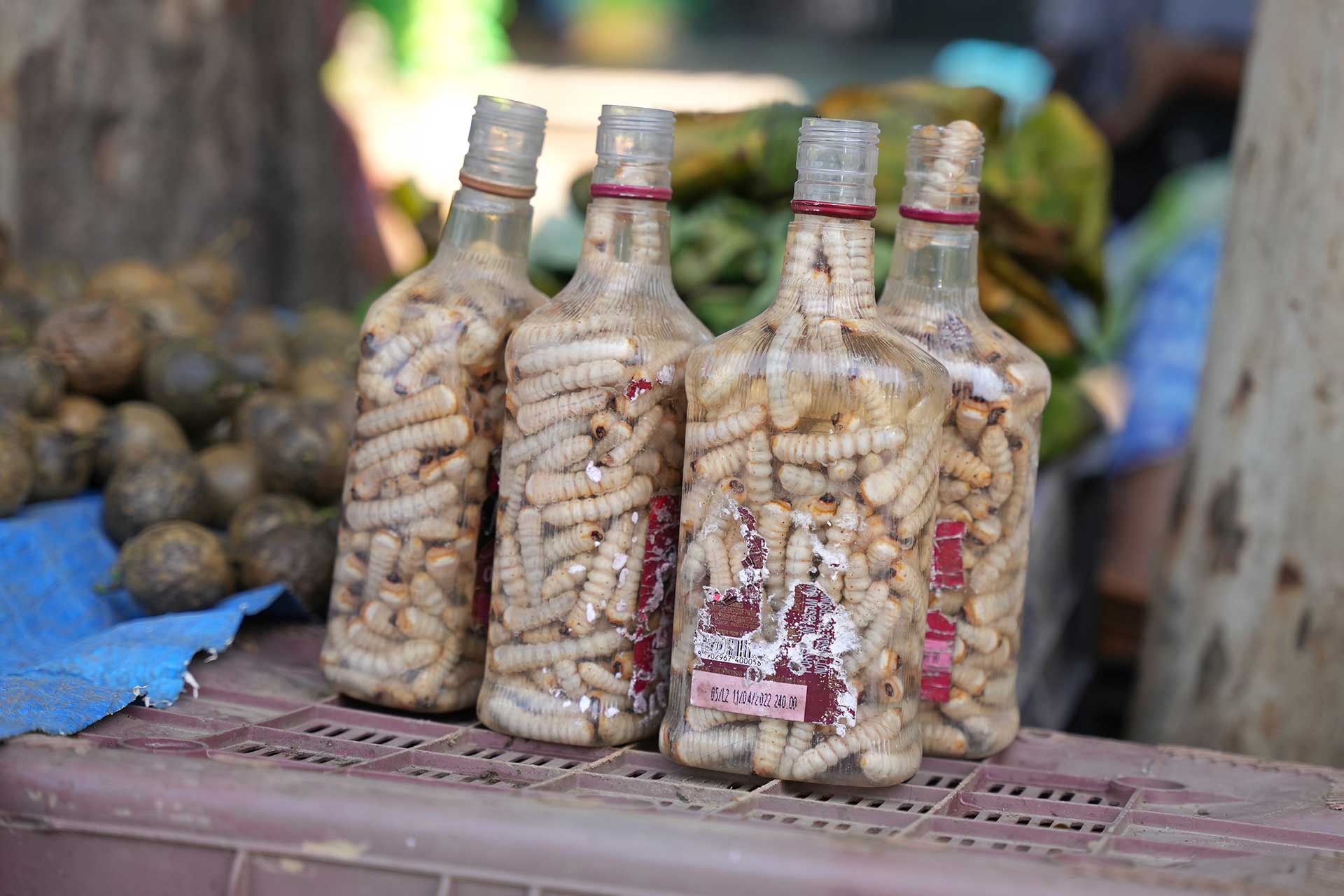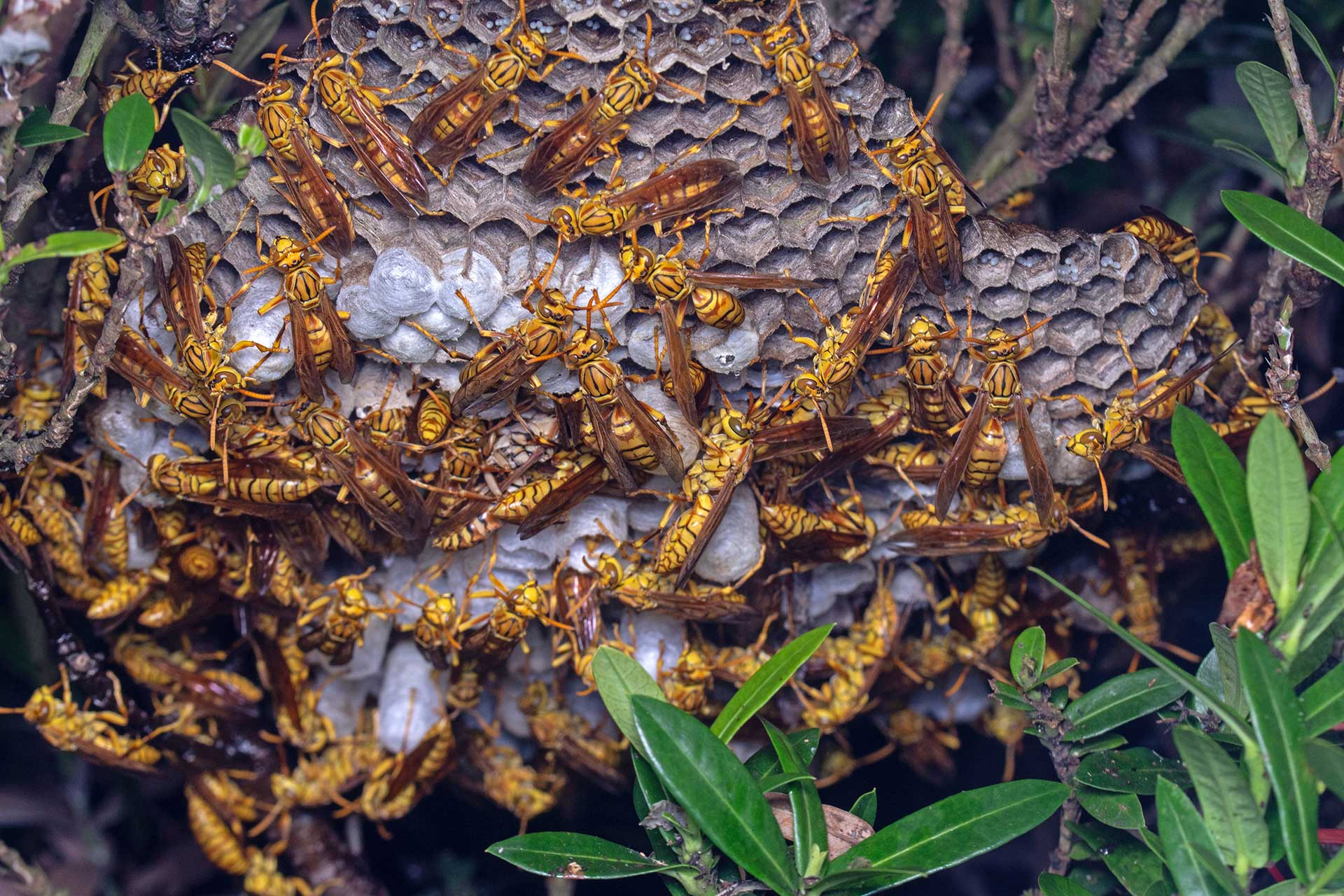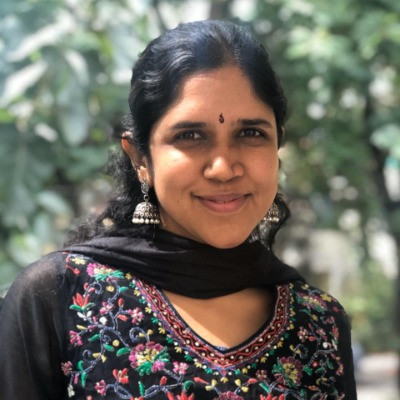The first frame is something straight out of a science fiction movie. Spherical, white incubator-like tubes vibrate as small, orange beings with tiny tentacles emerge from within. Before you let your imagination run wild, the audio pans out to include the nearby human chatter in a bustling marketplace in Nagaland. Next to fresh produce, you see freshly emerging insects as vendors count and place them on plates for sale. It is a scene from Dipen Rangmang and Thejavikho Chase's award-winning film on edible insects—Rearing Giants.
If you are a regular visitor to the Nature inFocus site, the concept of edible insects is not completely alien to you. With the increasing global population and a dire need to seek alternative and sustainable protein sources, entomophagy or eating insects is gaining prominence as the preferred solution.
But as we focus on how edible insects tick all the boxes in terms of being the nutritionally, economically and environmentally viable choice, the often-forgotten protagonists of the story are the communities that have traditionally grown and consumed these insects regularly. Thanks to filmmakers like Thejavikho Chase, their faces are also part of the narrative.
Circling Back to Insects
Hailing from Kohima, Nagaland, Chase is a Green Hub Fellow and a freelance documentary filmmaker exploring themes on insect ecology. After a bachelor's degree in history and a master's in archaeology, Chase joined Green Hub―a collaborative initiative established by the North East Network (NEN) and Dusty Foot Productions (DFP), which enables youngsters across northeast India to visually document the environment and the sustainability and cultural aspects of the region through fellowships.
On paper, it does seem like a drastic change—from the world of archaeology to that of insects, but for Chase, this was simply a rekindling of an interest that had been dormant for a long time.
"I always had this fascination for insects. My brother and I would use badminton rackets to capture insects. We would destroy my mother's garden in the process and then bring home the insects to look at them closely, observe their wings and other features," said Chase. "You could say that the origins of this fascination were probably unhealthy, " he added, laughing.
While joining Green Hub was part of the plan, serendipity played a role in Chase working on edible insects. He explained that the new fellows were required to intern with an NGO or a conservation-based organisation. "I interned at the Ashoka Trust for Research in Ecology and the Environment (ATREE) in Bangalore. When I joined ATREE, a team was already working on edible insects in Nagaland and other parts of northeast India. The project was at its initial stage, so I joined them and came back to Nagaland to document the edible insects of the region," said Chase. Well, as they say, right time and right place.
On Hornets and Shield Bugs
Working with Dipen Rangmang of Green Hub, Chase shot and edited two films as part of the ATREE project. Rearing Giants, which shined a light on great hornets reared for consumption in the hills of Nagaland and Edible Insects of Nagaland: Stink Bug, which took a closer look at the traditional knowledge and nutritional benefits of entomophagy, while focusing on the Pentatomidae or shield bug family of insects.
Rearing Giants won at the Nature inFocus Film Awards 2020, and Edible Insects of Nagaland: Stink Bug won at the Nature inFocus Film Awards 2022. The films have gone on to win other accolades as well.
Chase's films move the camera away from the endless possibilities that edible insects offer and zoom in on the people that work hard to make this sustainable food source a reality. Edible insects were a part of his life growing up in Nagaland, but the outside world seemed unaware. Chase is using his films to bring to light the many nuances of this concept.
"The peculiar thing about giant hornets is that although people consume them in other parts of northeast India, they harvest these insects from the wild. But in Nagaland, people rear these insects and sell them in markets. So, we thought this would be an interesting practice to document," said Chase talking about the thought process behind Rearing Giants.
Shield bugs came as a surprise to the filmmaker. During a morning walk through the market with Rangmang, Chase spotted shield bugs up for sale. "They are not normally consumed or sold in markets. I thought it was odd that they were available, so we approached the vendors and they told us they were sourcing them from the forests. That's how we got to documenting edible shield bugs," said Chase.
The duo’s curiosity took them deep into the forests where swarms of shield bugs adorned trees as the gatherers used bamboo baskets and tarpaulins to capture them. In both the films, Chase and Rangmang show how physically demanding the process is and how the locals have developed an intimate knowledge of the tiny insects over the years. From knowing which individual insects to capture, to digging up pits for rearing them and occupational hazards that include insect bites and burn-like marks on the skin, the films highlight many lesser-known facets of the edible insects business, leaving a strong impact on the viewer.
"The filming process was exhilarating and challenging," remarked Chase. "As we followed the locals through the harsh terrains, they talked to us about their work, and when they sensed the presence of insects, they would come to a quick halt, giving us just enough time to fish out cameras and set them up. We shot the process by holding our breaths so that our heavy breathing won’t be captured on audio. Now that we have better equipment, things have gotten easier," said Chase.
Chase hopes that as more research groups invest in entomophagy, the process of capturing edible insects will become a safer and easier experience for the locals. "The giant hornet, for example, is a dangerous insect. But the locals don't use any protective gears when harvesting them," remarked Chase, emphasising the struggles of finding edible insects.
The Future of Entomophagy
As someone studying and documenting the fragile relationship between people and insects, Chase can see the ripple effects of the growing interest in edible insects.
The last time he ventured into the forests to document an insect species, he could not find them in their usual habitat. As more and more insects are captured for consumption, their numbers in the wild are also reducing, Chase explained. “The market prices for edible insects are showing a steep rise. So people do collect more insects as they get better returns for them. This is also leading to overharvesting,” he said.
Chase believes that encouraging insect farming is critical to restoring the populations in the ecosystem. In fact, insect farming is on his bucket list as well. “So far, I have only been documenting insects, but in the future and with the help of my mentors, I hope to explore insect farming,” he said.
Though entomophagy has started to garner traction as a sustainable alternative, Chase feels that it’s not yet time for proponents of the concept to hang up their boots. "You can show people all the benefits of eating insects, but if this is a completely new concept for you, it can be quite the jump." He recommends focusing on insect-based cookies and other snack products to make the concept more palatable and approachable for the larger masses.
Beyond products, Chase also feels that information needs to be disseminated through various channels. “I was just watching a YouTube video by a famous food blogger where he showcases the edible insects of Nagaland and tastes them,” he said. “Documentary filmmakers, YouTubers, researchers—the more people talk about edible insects, the more acceptable it will become," he added.
The idea of entomophagy as the potential answer to food sustainability is not a recent ‘aha’ moment. It is believed that the practice dates back 7000 years, and about 2300 species of insects worldwide are considered edible. As much as the surge of interest in edible insects is a result of its ability to address the pressing issues of today’s world, the concept is also a veiled lesson on how food practices are wide and varied across communities. What is exotic for one is essential for the other. And filmmakers like Thejavikho Chase make that distinction all too clear.







